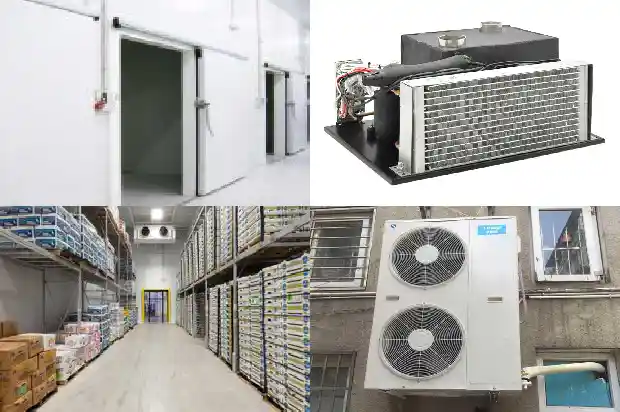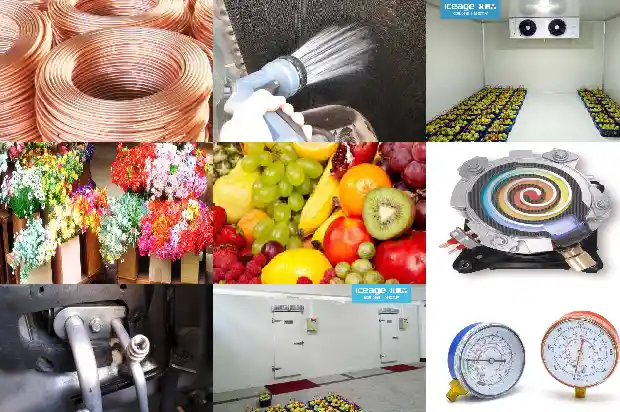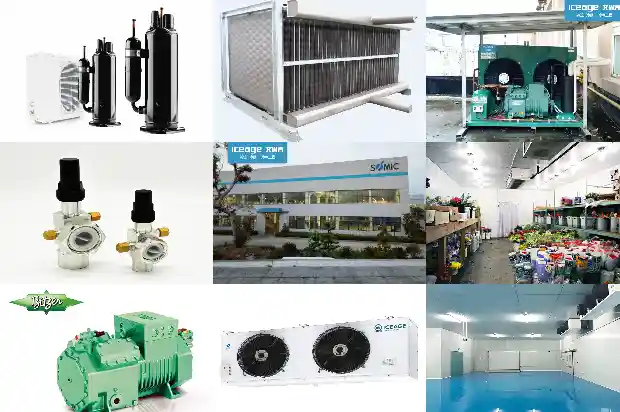Analysis and Troubleshooting of Common Faults in Air - source Heat Pumps
2025-01-07
- The unit freezes when exposed to cold and cannot be started.
When the temperature drops below 0°C, the entire system shuts down. Even if the temperature rises again, it still cannot start and operate. Or the outdoor unit fan rotates while the compressor stops working.
Cause analysis: The main reason for the unit to stop running lies in the control system. Check each set protection parameter value item by item. For example, in the water temperature difference control circuit, the system cannot start when it fails to collect signals. This is because the startup of the unit is jointly controlled by three parameters: the heat exchanger temperature, the collector tank temperature, and the set temperature. When the collected storage tank temperature is lower than the set temperature by a certain value, the unit starts. When the water temperature of the heat collection part is higher than the storage tank temperature by a certain value, the circulation starts. When the data of the heat collection water tank temperature cannot be collected, the unit self - protects and does not start. In addition, too low or too high voltage, refrigerant leakage, compressor low - pressure protection, or a broken compressor, etc., can all cause the unit to fail to start. When the cold water pressure is insufficient and water cannot be replenished into the storage tank, the unit will also be protected and cannot start.
Inspection and treatment: First, check whether the compressor is damaged. Measure the resistance of the compressor with a multimeter. After confirming that the compressor is fault - free, focus on checking each control system. Compare with the unit's factory instruction manual or the engineering system design acceptance report. According to the analysis, check the set parameters and measured data of the circuit, waterway, and temperature. Find out the non - compliant items and correct them accordingly.
When using a solenoid valve to control water supply, check the sensitivity of the water level sensor and the water pressure to ensure that it is not a problem with the water level data.
- The refrigerant circulation pipeline bursts, the refrigerant is lost, and the whole machine is paralyzed.
It is manifested as follows: after continuous operation or starting for a period of time, the noise of the outdoor main unit becomes louder, a crack appears in the local refrigerant circulation return pipe, and then the refrigerant leaks out, and the pressure test is zero. Sometimes the fan can rotate, but the water temperature does not change, and the resistance value of the compressor measured by a multimeter is extremely small. When the condenser part bursts, water seeps into the refrigerant pipeline and damages the compressor.
Cause analysis: The main reason for the bursting of the refrigerant medium circulation pipeline and the complete leakage of the refrigerant is that the pressure of the circulation system increases and exceeds the pressure - bearing range of the refrigerant circulation pipeline. As the weather gets colder, to produce the same amount of heat, the compressor does more work, and the phase - change critical point pressure of the refrigerant increases. It bursts due to insufficient thickness of copper parts or unqualified welding. Another situation is that the water quality is not clean, containing impurities such as iron filings and sand grains. These impurities cause long - term wear and tear on the heat - exchange copper pipes along with the water circulation, especially in the case of the tube - in - tube large - sleeve heat - exchange mode. The bursting of pipes due to the water's acidity, alkalinity, or scaling is relatively rare.
Inspection and treatment: First, find out whether the water quality is the main cause of the failure. In addition, for the bursting of pipes caused by the refrigerant, confirm whether the unit is operating within the allowable working condition range of the manufacturer's product design. Check whether there are cracks at each welding joint and connection port, and repair the welding or reconnect with a new expansion joint. If the burst port is between the expansion valve, the condenser, and the compressor, it is generally due to improper refrigerant selection or excessive dosage. For brand - name machines produced by regular manufacturers, each model has to go through strict tests and inspections, including simulated destructive tests under various working conditions, in order to determine the refrigerant charging dosage. - The outdoor unit frosts severely, the heating effect is seriously insufficient, and it may even freeze due to frosting. Or the defrosting time accounts for more than 50% of the unit's running time, resulting in a significant reduction in the heating capacity of the entire unit and an increase in power consumption.
Cause analysis: When the unit is working, when the temperature of the evaporator coil is lower than the dew - point temperature, condensed water is generated on its surface. When the condensed water is lower than 0°C, frost forms. The ventilation gaps between the heat - dissipation fins of the evaporator are partially or completely blocked by frost, thus increasing the thermal resistance and wind resistance and directly affecting the heat - exchange efficiency. In practical applications, frosting occurs in the humid winter weather in Yunnan, Guizhou, and even in Guangdong and Fujian regions.
This is because the air humidity in these regions is high. Sometimes, frosting occurs when the temperature is 2°C. While in northern Shaanxi, at - 5°C, there is no frosting because of the different air humidity.
Most of the heat pump units used in the market today use a temperature sensor for defrosting. The principle is as follows: when the temperature T2 of the outdoor evaporator coil drops to the frosting temperature M, frosting begins. When T2 - M ≤ - N, defrosting starts. During the defrosting process, T2 gradually rises. When T2 - M > N, defrosting stops. M and N are set according to the local weather conditions during the design. According to national regulations, the defrosting time of the heat pump should not exceed 20% of the total working time. In the defrosting design of the heat pump main unit, if defrosting starts when there is only slight frosting, it will cause energy loss during defrosting. If defrosting is carried out after severe frosting, even when the air inlet is almost completely blocked, it will lead to the long - term inefficient operation of the main unit, and may even cause the fan resistance to overload and burn out the motor. Therefore, the defrosting design and the technology used are the main aspects for the unit to solve the defrosting problem.
Inspection and treatment: Check whether the coil probe has fallen off, and whether the temperature - sensing position of the coil probe is accurate and whether it is damaged; if the defrosting parameters are set inaccurately, readjust the defrosting parameters; check if the system lacks refrigerant.
Related Articles
- Common Faults and Troubleshooting Methods of the Moving Mechanism of Piston Compressors
- Top Ten Components of Refrigeration Systems and Five Common Troubleshooting!
- Some Simple Troubleshooting for Combined Cold Storages
- Troubleshooting Ideas for Common Failures of Refrigeration Systems
- Basic Faults and Preventive Maintenance of Water - cooled Units
- Composition and Common Faults of Screw Refrigeration Compressors
- Common Faults and Solutions of Central Air - conditioning Chiller Units
- Common Faults of Industrial Chillers
- Common Faults and Corresponding Solutions of Chillers During Use
- Maintenance Methods for Faults in Screw Refrigeration Air - conditioner Compressors
- Analysis of Common Faults in Compressor Overcurrent and Burnout
- What are the reasons for the inactivity of the automotive air conditioning compressor? What are the common faults?
- Common Faults of HVAC Fan Coil Units
- Common Operating Faults and Treatment Methods of Centrifugal Compressors
- Common Four Faults and Replacement Methods of Scroll Compressor
- Analysis of Refrigeration Compressor Motor Faults
- Analysis and Treatment of Common Low-Pressure Faults in Chillers
- Analysis and Treatment of Common Low Pressure Faults in Chillers
